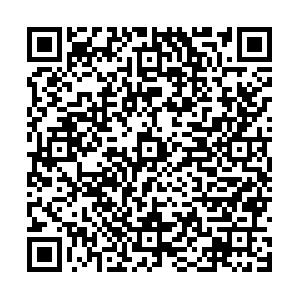Analysis of Residual-Stress Test Errors via Ultrasonic Method for Aluminium Alloy Used in High-Speed Trains
-
摘要: 为了研究超声波残余应力检测技术在高速列车关键部位残余应力检测时,不同误差对测试数据的的影响,以A5083及6005A为研究对象,研究了其织构各向异性与超声传播时间的关系,并分析了频率对测试深度应力系数的影响. 结果表明:在平行与垂直材料轧制方向,A5083材料声波传播在拉压应力状态下应力系数差别相对较小,偏差约为4.26%;6005A材料在拉压应力状态下应力系数差别相对偏大,拉应力和压应力拟合的应力系数偏差率约为13.12%,均需单独标定;不同频率声波探头测试的深度不同,所标定的应力系数值差别较大,焊缝区域在拉压应力状态下应力系数变化最为明显,最大变化率为30.69%,热影响区和母材的变化率分别为14.03%和9.66%.Abstract: To study the influence of different errors incurred during ultrasonic residual-stress detection on test data concerning key components of high-speed trains, the relationship between the anisotropy of A5083 and 6005A materials, in terms of texture and ultrasonic propagation time, was investigated. The stress coefficient corresponding to the measured depth at different frequencies was also investigated. Results demonstrate a relatively small difference between stress coefficients (a deviation of approximately 4.26%) corresponding to the tensile and compressive stress states of sonic-wave propagation along directions parallel and perpendicular to the rolling direction of the A5083 material. Corresponding deviation in the values of tensile and compressive stress states of the 6005A material equals 13.12%. As such, both materials must be calibrated separately. The depth measured by the sonic probe at different frequencies is different, and the stress coefficient calibrated by the probe at different operating frequencies varies greatly from one region to another. Values of the stress coefficient demonstrate obvious changes under tensile and compressive stress states in the weld zone. The maximum rate-of-change observed measured 30.69%. Change rates corresponding to the heat-affected area and base-metal zone measured 14.03% and 9.66%, respectively.
-
表 1 不同频率探头试验深度与国标深度对比
Table 1. Comparison between experimental depths measured by different frequency probes and those prescribed by national standards
项目 探头频率/MHz 2.25 3.50 5.00 10.00 试验深度/mm 3.00~4.00 2.00~3.00 1.50~2.00 1.00~1.50 GB/T 32073—2015深度/mm 2.94 1.92 1.37 0.70 -
苟国庆,黄楠,陈辉,等. 高速列车A6005铝合金焊接接头盐雾腐蚀行为分析[J]. 焊接学报,2011,32(10): 17-20GOU Guoqing, HUANG Nan, CHEN Hui, et al. Analysis on corrosion behavior of welded joint of A6005 aluminum alloy for high-speed train[J]. Transactions of the China Welding Institution, 2011, 32(10): 17-20 苟国庆,于金朋,张立民等. 铝合金车体结构焊接残余应力研究[J]. 电焊机,2011,41(11): 35-38GOU Guoqing, YU Jinpeng, ZHANG Limin, et al. Research of welding residual stress about aluminum alloy carbody[J]. Electric Welding Machine, 2011, 41(11): 35-38 苟国庆,黄楠,陈辉,等. X射线衍射法测试高速列车车体铝合金残余应力[J]. 西南交通大学学报,2012,47(4): 618-622GOU Guoqing, HUANG Nan, CHEN Hui, et al. Detection of residual stress in aluminum alloy carbody of high speed train using X-ray diffraction technology[J]. Journal of Southwest Jiaotong University, 2012, 47(4): 618-622 路浩,马子奇,刘雪松,等. 300 km/h高速列车车体残余应力超声波法无损测量[J]. 焊接学报,2010,31(8): 29-32LU Hao, MA Ziqi, LIU Xuesong, et al. Ultrasonic residual stress measurement of 300 km/h high speed train body[J]. Transactions of the China Welding Institution, 2010, 31(8): 29-32 路浩,刘雪松,孟立春,等. 高速列车车体服役状态残余应力超声波法无损测量及验证[J]. 焊接学报,2009,30(4): 81-83LU Hao, LIU Xuesong, MENG Lichun, et al. Residual stress evaluation of high speed train body structure by ultrasonic method and verification[J]. Transactions of the China Welding Institution, 2009, 30(4): 81-83 JAVADI Y, ASHOORI M. Sub-surface stress measurement of cross welds in a dissimilar welded pressure vessel[J]. Materials & Design, 2015, 85: 82-90 JAVADI Y, HLOCH S. Employing the waves to measure longitudinal residual stresses in different depths of a stainless steel welded plate[J]. Advances in Materials Science & Engineering, 2013, 12(5): 256-261 JAVADI Y, AKHLAGHI M, NAJAFABADI M A. Using finite element and ultrasonic method to evaluate welding longitudinal residual stress through the thickness in austenitic stainless steel plates[J]. Materials & Design, 2013, 45(45): 628-642 马子奇. 超声波法焊接残余应力测量研究[D]. 哈尔滨: 哈尔滨工业大学, 2009 ROSE J L. Ultrasonic guided waves in solid media[J]. Ultrasonic, 2014, 22(3): 15-18 KANDIL F A, LORD J D, FRY A T, et al. A review of residual stress measurement methods-A guide to technique selection[J]. International Journal of Modern Physics B, 2001, 5(2): 1082-1086 蒋刚,谭明华,王伟明,等. 残余应力测量方法的研究现状[J]. 机床与液压,2007,35(6): 213-216JIANG Gang, TAN Minghua, WANG Weiming, et al. Research situation of residual stress measurement method[J]. Machine Tools and Hydraulics, 2007, 35(6): 213-216 赵翠华. 残余应力超声波测量方法研究[D]. 哈尔滨: 哈尔滨工业大学, 2008 KUMARAN S M. Evaluation of precipitation reaction in 2024 Al-Cu alloy through ultrasonic parameters[J]. Materials Science & Engineering A, 2011, 528(12): 4152-4158 JHANGA K Y, QUAN H H, HA J, et al. Estimation of clamping force in high-tension bolts through ultrasonic velocity measurement[J]. Ultrasonics, 2006, 44(8): 1339-1342 -






 下载:
下载:





